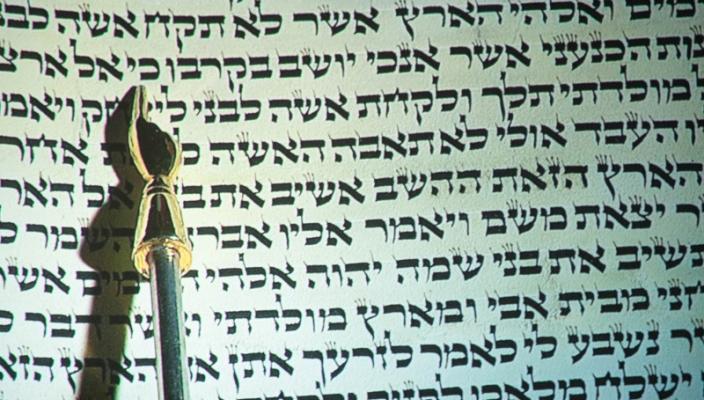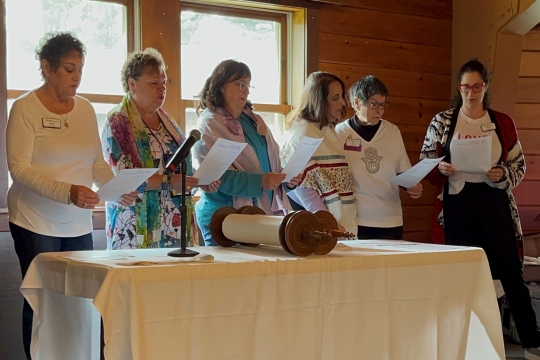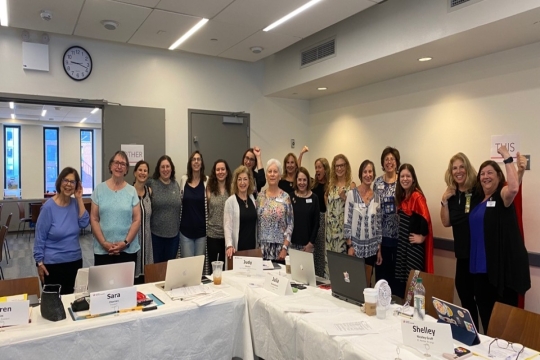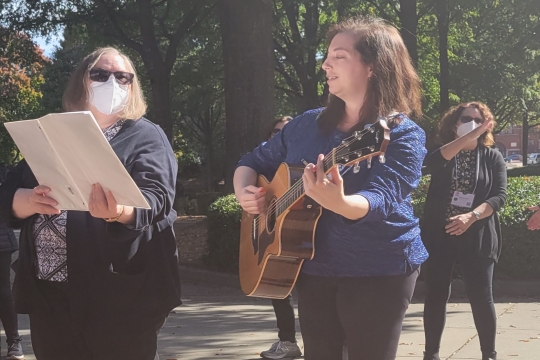
I must admit I was first drawn to Parashah T'tzaveh due to the opulent description of the garments commanded by G-d to Moses to be assembled for the High Priest (Kohen Gadol) Aaron and his sons. Moses was commanded to only recruit the best craftspeople to make four garments for the sons and eight for Aaron. Explicit placement of twelve gems, cords of gold, blue, purple and crimson linen with gold threads, pomegranates and bells were to adorn Aaron’s breastplate and efod (apron-like garment).
But it was G-d’s commandment to Moses regarding the lighting of the menorah that resonated with me. Tetzaveh, a derivation of the Hebrew work tzavah, means to command. In the first section of Tetzaveh G-d commands Moses to have the children of Israel provide only the first few drops of oil from the olive for the menorah in the Mishkan or Tabernacle as these bring the brightest flame. Rabbi Sara Paasche-Orlow states in The Torah: A Women’s Commentary that this is the only commandment of the Tabernacle that has remained intact. She says the Temple lights were a precursor to the lighting of the Shabbat candles in her essay for Tetzaveh, “Finding Our Home in the Temple and the Temple in Our Home.” How special that it is women who are continuing the spiritual legacy of the Mishkan!
Although while growing up my family belonged to a conservative synagogue, lighting the Shabbat candles was not a practice in our home. It wasn’t until my daughter attended the day school affiliated with our temple and learned the blessings that I began this beautiful weekly ritual. And although our family is not particularly observant, it is a practice that my husband, our son Aaron, and I continue. Aaron, who has special needs, finds reciting the Friday night blessings both comforting and joyous.
I was beaming and quelling for our daughter at her Bat Mitzvah, now more than 19 years ago, but I was also so proud of Aaron as he led the Hamotzi at the conclusion of the service. There were more than a few teary eyes as he recited the blessing. Saying the blessing followed by sharing challah with those in attendance also relates to the commandments God again gives Moses in his requirements for the seven days of animal sacrifices placed in the Mishkan along with the specially prepared bread and salt.
“Aaron and his sons shall eat the flesh of the ram and the bread that is in the basket, at the entrance of the Tent of Meeting.”
Rabbi Paasche-Orlow concludes her essay that with these rituals, “Jewish homes now serve as temples. The Shabbat dinner is something that for centuries has not been the domain of rabbis and men, but of women and families together.”
So tonight, as we light our Shabbat candles and serve our Shabbat meal, let it remind us of the Mishkan and our connection to this holiest of places. Shabbat Shalom!
Diane Pont is on the Board of Directors of WRJ and an Area Director on the Southwest District Executive Board. She lives in Sugar Land, Texas and is member of Congregation Beth Israel in Houston.
Related Posts

Parashat Yom Rishon shel Rosh HaShanah

Cultivating a Culture of Accountability and Belonging

